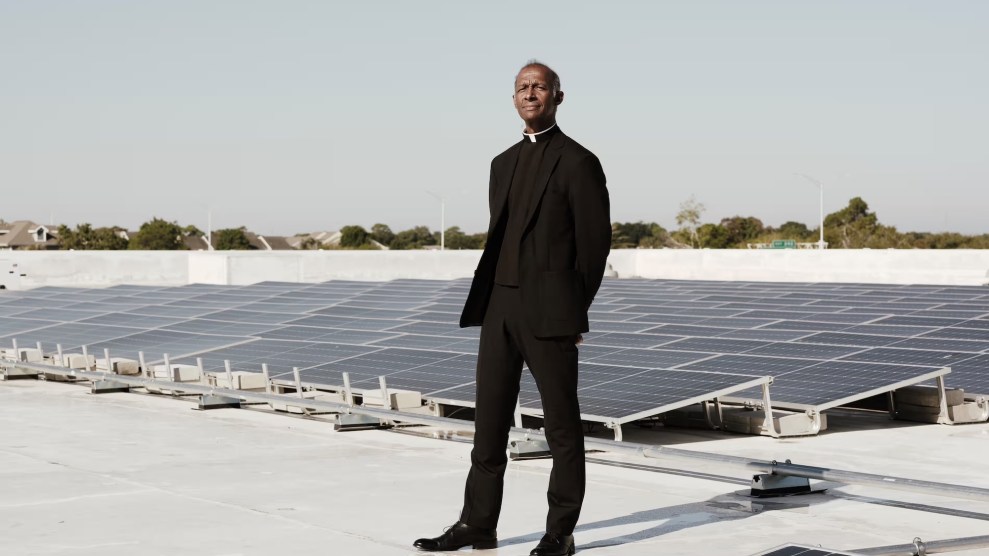Once the coronavirus made its human debut, it wasn’t long before scientists found the virus in our poop. Fecal samples from the earliest patients, including the first known case in America, revealed people were shedding the virus not only from their noses and mouths, but also through their excrement.
This would turn out to be a pivotal discovery: If the virus was in our waste, it had to be in the sewers, too. And the sewers, scientists hoped, held information about how the virus was spreading. “They started saying, ‘We know this is in the wastewater,” Guy H. Palmer, a professor of pathology and infectious diseases at Washington State University, told me. “Can we measure it?’”
The answer was a resounding yes. By sampling sewage, scientists discovered they could estimate Covid trends across communities with stunning accuracy.
“Wastewater surveillance”—the practice of monitoring sewage for pathogens, contaminants, or drugs—has since become a game-changer in the fight against Covid, particularly as at-home testing has eclipsed testing in clinics. As Palmer and his colleagues noted in a recent 151-page report for the National Academies of Sciences, Engineering, and Medicine, dozens of cities and states across the US have used sewer data to track Covid outbreaks, identify hotspots for vaccination outreach, decide where to allocate treatments like monoclonal antibodies, and serve as an early alarm for individual communities like schools or universities.
In other words, the data contained in our poop has likely saved lives. That lesson may come in handy the next time a pathogen threatens humanity.
The practice of using plumbing to track and prevent disease isn’t new. A series of cholera outbreaks in the mid and late 1800s prompted many cities, including London, Boston, and Chicago to install sewer systems in the first place. In the 1940s, health authorities began tracking polio in wastewater. But after the disease declined to be a major threat in the US, wastewater surveillance became mostly limited to academic research studies. Covid changed that: Today, about 40 percent of the country lives in an area where their feces are monitored for the coronavirus. Several European countries, including Finland, Spain, and the Netherlands, established national wastewater monitoring programs not long after the pandemic hit.
In March, I visited a Houston wastewater plant to see how it works. The city’s Covid surveillance program is considered among the most impressive in the country, in part because of the sheer scale of it: Officials are tracking Covid for its more than 2 million poopers across 39 wastewater treatment plants—more plants than in New York City, Los Angeles, and Chicago combined. It helped that Houston is home to some of the world’s leading statistical and epidemiological experts who “dropped everything” to establish the wastewater program, says Loren Hopkins, a statistician at Rice University and Houston’s chief environmental science officer. The effort has been so effective (and in a red state, no less) that the Centers for Disease Control and Prevention has tapped the city to help develop trainings for the rest of the country.
On a Tuesday morning, I join Houston Public Works managing engineer Walid Samarneh to watch as his designated “sample guy,” Nadeem Rehan, collects a jug of murky, slightly chunky sewer water as it is being pumped into the plant for treatment. If you’ve ever had your toilet back up, you’d be familiar with the smell—organic, like lake water, with hints of acidity and eggs. He pours the water into two bottles, one to be transported to the Houston Health Department and the other to Rice University for testing. Then, as I see at Rice, a cheerful team of scientists preps the sample for a PCR-based test (similar to the ones run on our nasal swabs) to deduce the concentration of virus in the sample—and by extension, the community. By Monday, statisticians will have analyzed the data for each wastewater treatment plant and uploaded it to a public dashboard where Houstonians can see the Covid trends in their area. It’s a bit like checking the weather, but for Covid.
But what I found most compelling about Houston’s program is how city officials have used its sewer data to fight the virus. For one, explains Dr. David Persse, the city’s chief medical officer, it’s allowed hospitals to know when to expect a surge in patients, and when to avoid scheduling elective surgeries that would otherwise limit capacity. The city also conducts “pinpoint testing” at sewers just outside of schools, jails, homeless shelters, and assisted living facilities. (This requires a two-person team to physically visit each location and in some cases hoist sampling devices from cockroachey manholes.) Particularly in the early days of Covid, this site-specific testing served as a warning system: If the virus appeared in a nursing home’s wastewater, Persse says, “[we’d] test everybody, all the employees, residents—bada bing, we found it. And then they could control it.” According to Persse, just 8.4 percent of Covid deaths in Houston have been related to long-term care facilities, compared to an estimated 23 percent nationally.
Some cities, Houston included, are already relying on wastewater to track RSV and flu outbreaks, too. “We started seeing the flu since like late summer, earlier than normal,” says Raul Gonzalez, who runs a surveillance program in Hampton Roads Sanitation District in Virginia. “It was great to be able to say, ‘Hey, look, the flu is already on the rise—it’s earlier than it usually is.’” It’s also possible to monitor sewage for rare but known threats like hepatitis A or dengue. (In early 2022, officials in London, for instance, discovered the first known case of polio in the country since 1984 with wastewater infrastructure designed for Covid. Similarly, last summer, at some sites in the San Francisco Bay Area, researchers spotted Mpox in sewage—before there’d been any reported clinical cases.)
And then there’s the holy grail of wastewater surveillance: “Pathogen X,” a term epidemiologists use to refer to the next virus with pandemic potential. For now, this research is still in preliminary stages, says Lauren Stadler, an environmental engineer at Rice University who is working to develop systems to detect emerging pathogenic threats to humans. But scientists say it could work by placing “sentinel” sewage sampling sites by places where threats may first appear, like international airports, zoos, or livestock and poultry farms.
The challenge is convincing the rest of the country to, well, get their shit together. In September 2020, the CDC launched the National Wastewater Surveillance System (NWSS) to centralize data collected by cities and states across the country. But not all areas are testing wastewater equally. Programs that do exist are primarily in large cities or states with the resources—and political will—to fund them: In late June, for example, Illinois sent data from 85 sampling sites; North Dakota reported from just two. Other states have simply ignored wastewater data: When the Omicron variant first emerged in Orange County, Florida, in December 2021, officials following the state’s hands-off pandemic approach reportedly made little effort to change their Covid policies. (Orange County Utilities said in a statement to Mother Jones that wastewater data has been “useful” in crafting the county’s public health response.)
There’s also a heap of privacy concerns to sort out. For one, the term “surveillance” may raise alarm for some communities, as it suggests a form of policing. That’s not a hypothetical concern: Authorities have looked to sewage to track rates of illicit drug use, including opiates, cocaine, and marijuana. “If people start thinking law enforcement has open access to this data under all conditions,” Palmer says, “then there’s going to be a lot of resistance to participation.” With today’s technology, he notes, it’s not possible to identify individuals from wastewater and link them to drug use or disease, “but the science is advancing pretty quickly.” And even if individuals can’t be singled out, disease levels for communities as small as 100 people can be—putting those communities at risk of potential stigmatization, Palmer warns. (Hasidic Jews in New York, for instance, may fall into this category.)
Despite these obstacles there is hope the US can get its sewage monitoring program up to speed: In 2021, Congress granted the NWSS $384 million to be used between 2022 and 2025. Last year, it gave $64 million to support wastewater surveillance initiatives across 42 states and five cities. Compared to the estimated $16 trillion in health and economic costs seen within the first two years of this pandemic, that’s just a drop in the bucket.
The hope is that funding will keep flowing, because “change is accelerating on this planet,” Persse warns. “It won’t be another 100 years before we have another pandemic.” As he and the city of Houston have learned, sewage can be a powerful tool in fighting disease—if we don’t flush it away.












